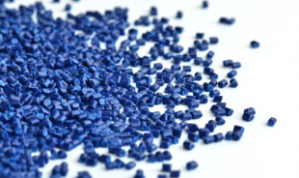X-Ray Shielding is the process of preventing radiation produced from X-Rays from reaching an unwanted place or person. X-Ray Shielding or radiation protection is the science and practice of protecting people and the environment from the harmful effects of ionizing radiation.
 Ionizing radiation is widely used in industry and medicine, and while it can be incredibly useful for many technologies, it nevertheless presents a significant health hazard as well. It causes microscopic damage to living tissue, which can result in skin burns and radiation sickness at high exposures (known as "tissue effects,") and statistically elevated risks of cancer at low exposures ("stochastic effects").
Ionizing radiation is widely used in industry and medicine, and while it can be incredibly useful for many technologies, it nevertheless presents a significant health hazard as well. It causes microscopic damage to living tissue, which can result in skin burns and radiation sickness at high exposures (known as "tissue effects,") and statistically elevated risks of cancer at low exposures ("stochastic effects").
Radiation can be a serious concern in nuclear power facilities, industrial or medical x-ray systems, radioisotope projects, particle accelerator work, and in a number of other circumstances, yet it is also the byproduct of critical technologies which have changed the landscape of the medical community. Containing radiation and preventing it from causing physical harm to employees or their surroundings is an important part of operating equipment that emits potentially hazardous rays. Preserving both human safety and structural material that may be compromised from radiation exposure are vital concerns, as well as shielding sensitive materials, such as electronic devices and photographic film.
X-Ray shielding is based on the principle of attenuation, which is the ability to reduce a wave’s or ray’s effect by blocking or bouncing particles through a barrier material. Charged particles may be attenuated by losing energy to reactions with electrons in the barrier, while x-ray and gamma radiation are attenuated through photoemission, scattering, or pair production. Neutrons can be made less harmful through a combination of elastic and inelastic scattering, and most neutron barriers are constructed with materials that encourage these processes.
There are several factors that influence the selection and use of X-Ray shielding materials. Considerations such as attenuation effectiveness, strength, resistance to damage, thermal properties, and cost efficiency can affect radiation protection in numerous ways. For example, metals are strong and resistant to radiation damage, but they undergo changes in their mechanical properties and degrade in certain ways from radiation exposure. Likewise, concretes are strong, durable, and relatively inexpensive to produce, but become weaker at elevated temperatures and less effective at blocking neutrons.
In most cases, high-density materials are more effective than low-density alternatives for blocking or reducing the intensity of radiation. However, low-density materials can compensate for the disparity with increased thickness, which is as significant as density in shielding applications. While lead is the most suitable element for the prevention of the movement and penetration of the radiation there is also a better solution. Tungsten polymers are the next big thing.
The popularity of tungsten polymers is slowly rising due to the fact that tungsten is disposable unlike lead which has become an environmental hazard of late. Lead is not biologically degradable whereas tungsten is and thus the decrease in popularity. Tungsten polymers also do not pose any health risks associated with lead. The primary application of tungsten polymers is in replacing lead, for which these polymers are already being utilized extensively.







0 comments:
Post a Comment